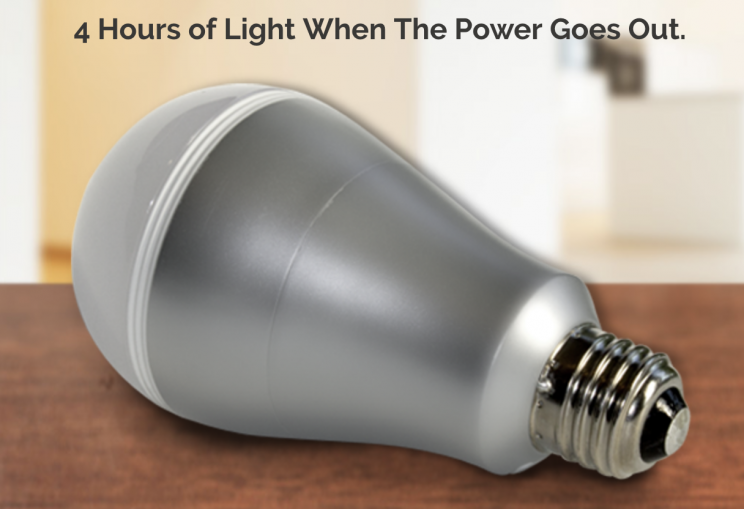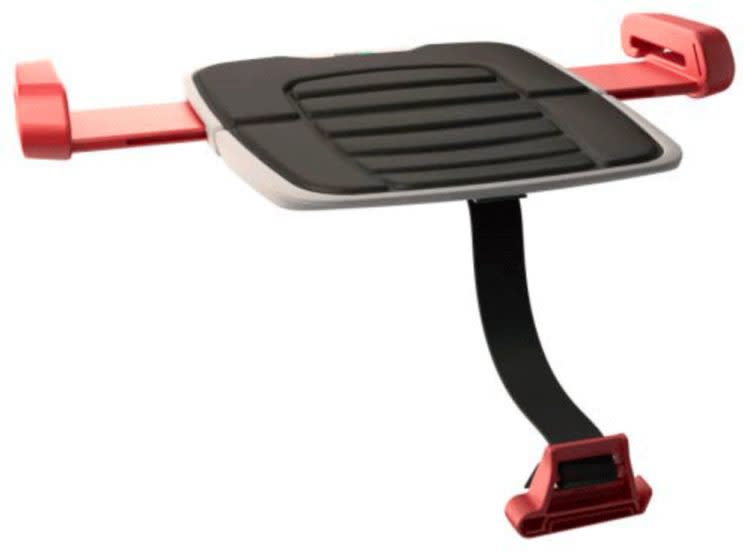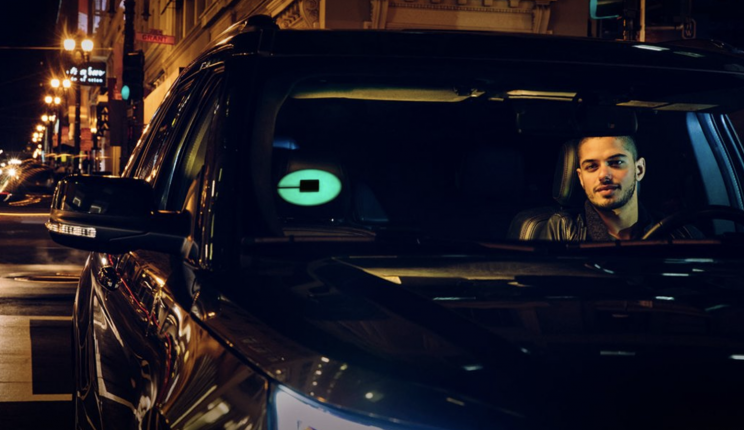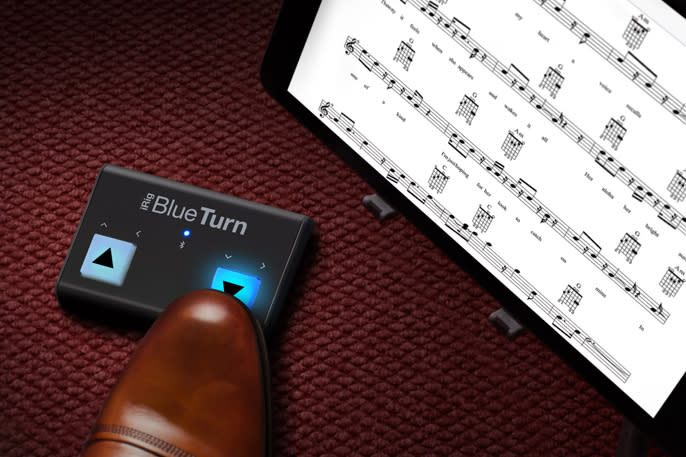The Pogie Awards: The best ideas in technology of 2016
Good evening, ladies and gentlemen! Please find your seats and silence your phones… it’s time now for the 12th annual Pogie Awards!
This time of year, the web teems with “best products of the year” articles. But the Pogie awards are different.
These are awards for the best feature ideas within products—even if the products themselves aren’t so hot. The point is to celebrate the inspiration that struck some designer or engineer—and to hail that idea’s successful journey out of committee, past the lawyers, and into the hands of the public.
So what were the best ideas in tech of 2016?
The envelopes, please!
The Bright Idea Award
The Smart Charge light bulb is an LED bulb, and that’s a great start. In other words, it lasts practically forever, and uses very little power. It’s the size of a normal bulb, so you can screw it into any lamp or fixture.
Its big idea? In case of a power failure, this bulb stays on. It’s got its own battery backup. When the power’s out, this bulb behaves exactly as it always has, for a total of four more hours of light. (The battery recharges whenever the power isn’t out.) You’ve performed your last frantic hunt for a working flashlight.

But here’s where your mind will fall apart: You can still turn this bulb on and off from the wall switch, even when the power is out.
How the—??
(It has something to do with checking the impedance of your house’s wiring. All I know is that the bulb doesn’t come on unless there’s at least one non-smart appliance on the same circuit, like a normal lightbulb.)
The Sharp Focus Award
Next up: The Sharp Focus Award. This year, the award goes to a strange, lovely little feature of the iPhone 7 Plus: Portrait Mode.
The 7 Plus has two camera lenses: one wider angle, one a 2X zoom. Clever software lets you blend the zoom to any degree between them (or, using digital zooming, go all the way up to 10X).
But the two-lens setup has a second benefit: It lets the camera tell the foreground subject apart from its background. And with that knowledge, the phone can create a soft blurry-background look, like what you see in professional portraits.

Now, the blur in this case is not optically created, the way an SLR makes it. It’s created with software—a glorified Photoshop filter.
And Apple’s (AAPL) not the first company to try it. Some Samsung phones, years ago, offered a similar feature. But without dual lenses, those phones didn’t have great luck distinguishing the subject from its background, and you often wound up with hideous “leaking” of the blurriness effect.
Apple’s effect on the other hand, generally looks fantastic, even when the outline of the subject is complex (like frizzy hair).
As long as the distance is right and the light is good, the results are fantastic.
One for the Kids Award
We move on now to the One for the Kids Award.
Booster seats for kids are kind of big and frustrating—basically, they’re not portable. Every time your kid gets in a taxi or a rental car or another family’s car, guess what? No booster seat.
But the MiFold booster seat is so small, you can carry it anywhere. Instead of lifting the kid up, it pulls the seatbelt down, achieving the same safety effect without the bulk.

Great, great idea.
Find My Ride Award
The winner of our Find My Ride award this year is the Uber Beacon, a wireless light that Uber drivers will soon be putting on their dashboards.
Because it can glow any color, your app tells you what color to look for when you order your ride—so when the car pulls up, you’ll know it’s here for you. No more guessing games after dark. No more getting into the wrong Uber by accident.

A simple, great idea.
Straight Orientation Award
And now we come to what the committee calls the Straight Orientation Award! And it goes this year to one particular feature on one particular drone. It’s called Smart Mode, and it’s on the Yuneec Typhoon H.
This might take some explanation. In most drones of this type, the right joystick controls the flying direction. But that can be tricky if the drone has gotten turned around in flight. Suddenly, pushing the joystick forward doesn’t fly the drone forward; it may zoom in some totally unexpected direction, depending on where the nose is pointing.

But in Smart Mode, the drone always flies the way you’re pushing the stick, no matter which way the drone is facing. It’s brilliant, it’s optional, and it’s ingenious.
Music to my Feet Award
I’m particularly pleased that we can offer the world’s musicians a little something this year, in the form of the Music to my Feet Award.
These days, many musicians don’t use sheet music on music stands; instead, they use iPads or phones or laptops to display the score. But then how do you turn the page in the middle of playing, when your hands are on your instrument?
The iRig Blue Turn solves that problem neatly. It’s an inexpensive, compact, wireless foot pedal that lets you turn the page with a toe-press.

Total Recall Award
These days, the internet places thousands of claims on our attention! In the course of a week, we read stuff in our email, in texts, in chats, in tweets, and on hundreds of web pages. Which is why the phrase for the new millennium is: “Oh, where did I read that?”
Wonder no more!
Atlas Recall is a photographic memory for your computer. It remembers every document, every web page, every email that’s crossed your screen—so you can search for it and pull it up later.

It’s got its bugs and limitations, as I wrote in my full review. But remember: These awards go to the best ideas, not the best products—and this idea is sensational.
The Pogie Ultimo 2016
And finally, we come to our biggest award of the evening: The Pogie Ultimo!
The one idea that has the most potential to improve the lives of the downtrodden technology-using masses with a single, ingenious stroke. And that award goes to mesh WiFi!
From the dawn of wireless, we’ve expected one WiFi router to broadcast WiFi signal to every corner of our homes. It’s an impossible task. Walls and corners and ceilings kill that idea. The result: DEAD SPOTS.
But the new thing in routers this year is mesh networks. Instead of one WiFi transmitter, it’s a set of them, which you’re supposed to space evenly through your house. The result is a single “mesh network,” a roaming network, that blankets the entire house in good, strong, signal. (Their marketing pitch goes like this: Expecting a single router to fill an entire home with WiFi is like expecting one speaker to fill every room with music.)

Mesh WiFi smashes the dead-zone problem like a sledge hammer on an ant. It’s gorgeous, joyous, and drop-dead simple to set up.
The first one out the gate was Eero, but now there are similar sets from Google (GOOG, GOOGL) Netgear (NTGR), Luma, Amplifi, and others.
Happy New Year
And there you have it, folks—the 2016 Pogie Awards. Let these bursts of inspiration show you that even products that are turkeys… sometimes harbor a little bit of gravy. Good night, everyone—and happy New Year!
David Pogue, tech columnist for Yahoo Finance, welcomes non-toxic comments in the Comments below. On the Web, he’s davidpogue.com. On Twitter, he’s @pogue. On email, he’s [email protected]. You can read all his articles here (https://www.cerveza-artesanal.com/news/david-pogue/), or you can sign up to get his columns by email (https://j.mp/P4Qgnh).
